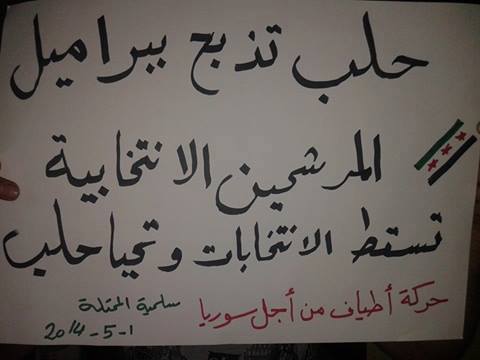The Spectrums for Syria Movement is a civil society movement that was founded in the second half of 2011. It was founded to coordinate various revolutionary efforts amongst those who held similar ideas and perceptions about Syria’s future. Where their ideas intersected, Spectrums was formed. Based on the testimony of an activist close to the movement, the Spectrum movement sought to create an overarching framework for many of the young men and women involved in the revolution who were yearning to find a group that represents them and engages in civic mobility.
And truly, the Spectrums Movement began when 15 young men and women, gathered after lengthy discussions and debates and set clear goals for their work in the future. They developed an identity that was congruent with the current situation in Syria and that set them apart from the other groups.

Among the most prominent objectives of the Movement, was to “build a democratic civil state by drafting a new constitution for the country that underlines the separation of powers (legislative, executive, judicial) and to preserve the dignity and equality of the citizens.” They carried banners in their protests that stressed the need to “preserve the unity of the homeland and the renunciation of violence and sectarianism and promote a culture of citizenships, freedom of expression, and to improve Syrian society and the development of political and social dialogue.”
Spectrums for Syria engaged in various forms of revolutionary activities, from participating in demonstrations in several Syrian cities, like Kafersouseh, Midan, Jobar, and Yarmouk in Damacus, and in Homs and Salamiyeh. They participated in these protest because they aligned with their ideas for the future of the nation.
The Spectrums for Syria Movement participated in several campaigns launched by Syrian activists, such as the “Stop The Killing” and “Behind Bars” campaigns. In Salamiyeh, the young men of the movement used to spray paint the walls of the city, writing anti-Assad regime slogans and slogans rejecting violence and opposing the use of arms by all parties.
At the beginning of 2012, the Movement’s cadres faced extreme prosecution. They were being restricted in their movements and several of the activists were arrested. Many of the members had to flee Syria or go into hiding to escape arrest. As a result, they had to stop their activism and were confined to working in relief and media work. The Movement stopped working almost entirely in mid-2014.



